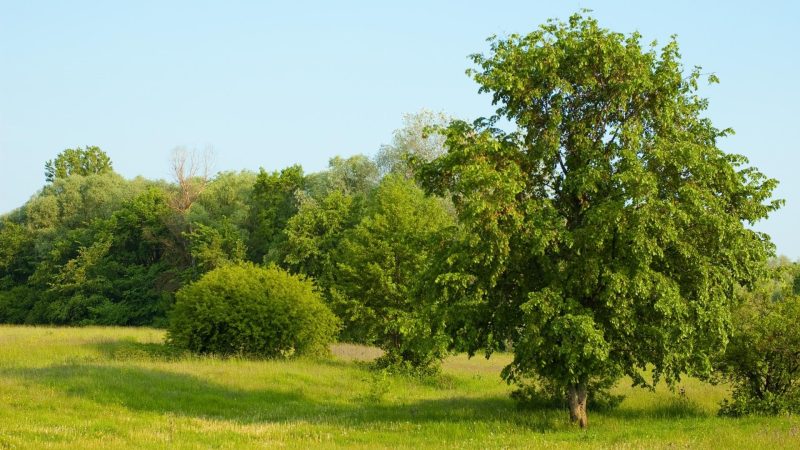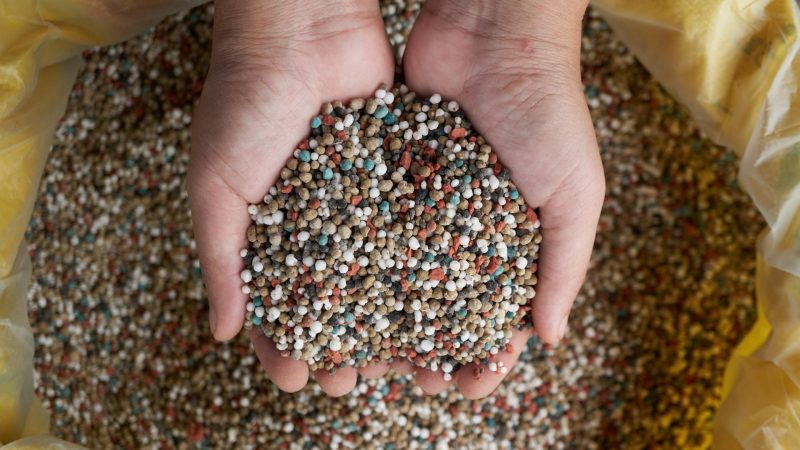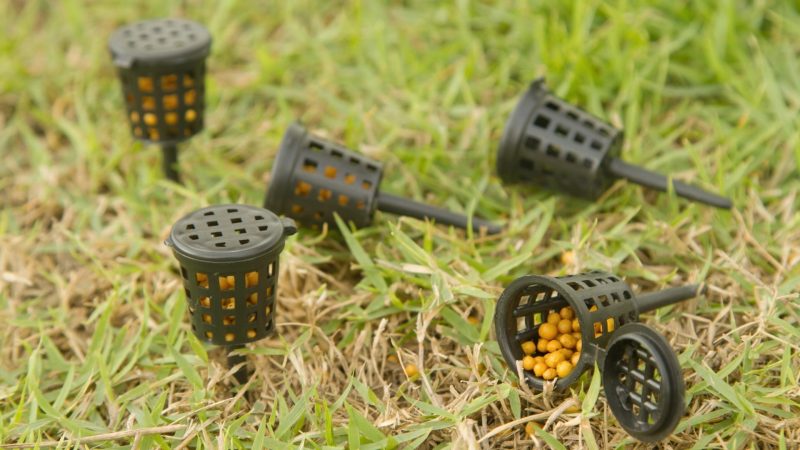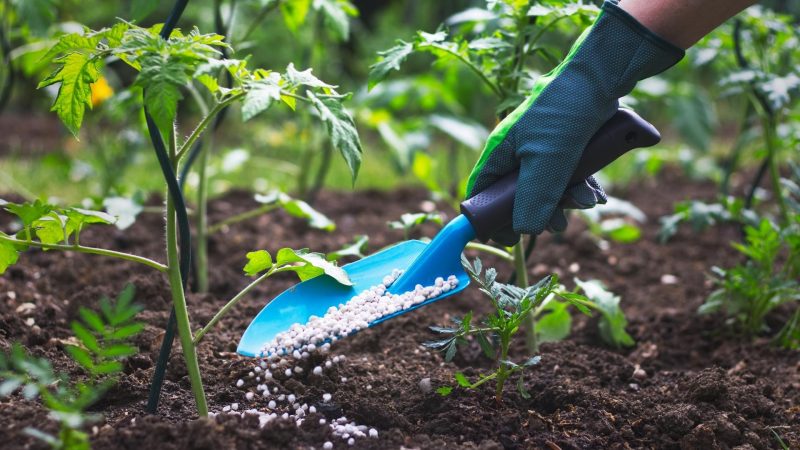Fertilizers help maintain the vigor of trees and shrubs, which aids in resisting pests and environmental stresses. They contain potassium, nitrogen, and phosphorus—the nutrients that are lacking in the natural soil.
So, what are the best fertilizers for trees and shrubs? The best fertilizers for trees and shrubs are the ones that contain the ‘BIG 3’ primary nutrients—potassium, nitrogen, and phosphorus. These nutrients can be found in commercial fertilizers, such as BioAdvanced Protect & Feed Shrub And Tree Food and Miracle-Gro Tree & Shrub Plant Food Spikes.
However, take precautions in using these commercial fertilizers as they can end up killing your plants if overused. Ideally, the application should be two to three pounds of fertilizer for every 100 square feet area. For the best result, make sure to read the product’s label before the application for proper usage. Continue reading to learn more.
Table of Contents
ToggleShould You Fertilize Trees and Shrubs?

Trees and shrubs need care and attention to keep them healthy and safe from any diseases. Since the natural soil lacks nutrients like nitrogen and phosphorus, fertilizing trees and shrubs is necessary. This way, the yields of crops will not deteriorate due to the lack of nutrients in the soil.
What Is the Role of NPK in Plants?

NPK or nitrogen, phosphorus, and potassium are deemed the ‘Big 3‘ of primary nutrients found in commercial fertilizers. These three nutrients play a very important role in a plant’s nutrition.
For example, nitrogen ensures plants are healthy as they grow and is essential in protein formation—which makes up the tissues of most living things. Meanwhile, phosphorus is connected to a plant’s capability to use and store energy, like the photosynthesis process.
On the other hand, potassium aids in fortifying the abilities of plants to resist diseases. It also plays a significant part in increasing the yields of crops and their overall quality. In addition, potassium guards the plants against cold and dry weather by strengthening their root system.
Nitrogen
In general, nitrogen (N) is liable for increased yield and vegetative growth. It’s the key component to the growth of plants and essential to chlorophyll, which enables plants to carry out photosynthesis.
Phosphorus
Phosphorus (P) also plays a significant part in healthy plant growth. It contributes to structural strength, seed production, crop quality, and growth of roots.
Potassium
Potassium (K) is also a great contributor to the growth and development of plants. This nutrient also fortifies plants to fight against diseases and produce high-quality yields.
Slow-Release vs. Quick-Release Fertilizer
With so many fertilizers accessible to homeowners, it’s essential to know which type of fertilizers you should use — the slow-release fertilizer or the quick-release fertilizer.
The slow-release fertilizer releases nutrients in a prolonged time, whereas the quick-release fertilizer dissolves quickly in the soil. There are several types of slow-release fertilizers, and organic materials like compost and manure are some of them.
It’s also best to note that the best time to use slow-release fertilizer is during the growing season, which happens to be spring to fall. However, quick-release fertilizer is also ideal to use during the fall period to add energy to the root system.
In general, slow-release fertilizers are best used in mature trees and shrubs, while quick-release fertilizers are ideal to be applied to newly planted trees or shrubs for faster growth.
Slow Release Tree Fertilizer Spikes

The slow-release tree fertilizer spikes are pre-measured, so you won’t likely over-fertilize your shrubs, garden, or trees. However, this type of fertilizer is more expensive than liquid or granulated products.
Some signs of over-fertilization are wilting or brown tipped leaves—which can be prevented by using spikes. There’s also no odor or runoff since the spikes operate underground.
Furthermore, spikes work by delivering nutrients over time into the soil, which was prompted by bacterial and fungal activity. This activity generates additional benefits that increase the resistance of trees, shrubs, and other plants against pests and diseases.
To apply:
- clean the area around the tree, plant, or shrubs for the spikes.
- Put the spikes in damp soil encircling its drip line. This line is beneath its edge, letting the rainfall directly into the spikes, promoting root growth.
Though the application seems simple and easy, it’s best to read and follow the product instructions thoroughly to get the best result.
Pros:
- Ideal for well-established lawns
- Support balanced growth
- Extensive release of nutrients, placing less stress on grass plants
- Reduces the risk of lawn diseases
- Promote a safer environment
Cons:
- Nutrients are not quickly available to plants due to the spikes’ slow distribution process.
- More expensive than branded quick-release fertilizers.
Quick Release Tree Fertilizer

Quick-release fertilizers are the type of fertilizers that dissolve quickly in the soil. As a result, nutrients like nitrogen and others are immediately available to the grass and plants.
In instances wherein you want your lawn to have a quick green-up, quick-release fertilizer is your top option. It aids in fast growth and blocks weeds’ growth.
However, this type of fertilizer is only ideal for newly hydroseeded lawns. Using this to well-established yards will promote growth too fast—which equates to frequent mowing.
Frequent mowing can cause slower turf recovery and less stress tolerance, which will do more damage than help to your grass. Thus, it’s important to note that the use of quick-release fertilizer is for recently hydroseeded lawns, not for a well-established one.
Pros:
- Nutrients are instantly ready for grass plants.
- Beneficial when plants require an instantaneous nutrients boost, like having newly established lawns or promoting fast growth out of a disease.
- Quickly dissolved in water.
- Encourage quick grass growth and greening.
Cons:
- It can be harmful to the environment due to the speedy release into the soil, causing nutrient leaching.
- It can only last for two to four weeks.
- This can burn your lawn if applied abundantly.
- It requires frequent mowing and reapplication.
Fertilizers for Trees and Shrubs
According to research, the nitrogen element yields the highest growth response in shrubs and trees. For such reasons, high nitrogen fertilizers are commonly advised for woody plants.
Some of these fertilizers include:
BioAdvanced Protect & Feed Tree And Shrub Food 2-1-1
This product has a dual-action formula, providing a year of insect protection along with feeding in one application. This uniquely patented formula eliminates tree-destroying pests and insects, such as aphids, leafminers, and more.
In addition, this also inhibits new infestations for a year. This plant food and slow-release fertilizer help improve the health of your shrubs and tree.
To use:
- For trees, mix 1/2 ounce of BioAdvanced Protect & Feed Shrub And Tree Food 2-1-1 to a gallon of water for every 1-inch distance around the tree. Once done, pour the solution throughout the base of the trees.
- For shrubs, mix 1.5 ounces in 1 gallon of water for every 1-foot height.
Pros:
- Insecticide plus fertilizer
- 12-month pest control protection
Cons:
- Not a proxy for a high-quality fertilizer
- Suitable only for mature trees
Down To Earth All-Natural Shrub & Tree Fertilizer 4-2-4
This item helps boost extensive root development and guard plants against various stresses, such as drought and transplant shock. The Down To Earth All Natural Tree & Shrub Fertilizer 4-2-4 is created to guarantee the plant’s survival and encourage quick reestablishment.
This is manufactured with a base blend of soybean, bone, and feather meal with reinforced rock sulfate, basalt, and kelp. This mix of natural elements is good for your garden.
However, the drawback of using this product is that it’s smelly.
To use:
- Mix 1 to 3 cups of Down To Earth All Natural Tree & Shrub Fertilizer 4-2-4 into the backfill soil. The natural mixture of this product won’t burn the shrub roots and young trees.
- For established trees, dig holes about 3 to 6 inches deep encompassing the tree drop line to prevent runoff.
Pros:
- Packed with quality organic ingredients
- Mild enough to use on young tree roots
Cons:
- Smelly
Miracle-Gro Tree & Shrub Plant Food Spikes 15-5-10
The Miracle-Gro Tree & Shrub Plant Food Spikes 15-5-10 contains 12-spike packs that are 4 inches in length. This product promotes dense foliage and vibrant color to trees and shrubs.
To use:
- Put the enclosed plastic cap on top of the spike.
- Recognize the drip line—the outermost border of tree branches.
- For small shrubs and trees with two feet drip line, insert the spikes two feet away from the center and ensure they’re three feet apart from each other.
Pros:
- Fair priced product from a premium brand
- Immediate results
- Easy application
- Contains natural ingredients
Cons:
- Best suitable for older trees
Scotts Evergreen Fertilizer For Trees And Shrubs 11-7-7
Scotts Everdeen fertilizer is a slow-release fertilizer that aids shrubs and trees to grow well. However, the drawback of this product is that it lacks iron, which helps deter the yellowing of leaves.
This fertilizer extends its feeding period for up to two months once it’s released. The application for this product is also pretty easy.
To use:
Step 1: Apply 1 cup of this product per 35 sq ft. every two months starting from early spring.
Step 2: Sprinkle this product directly and evenly into the soil.
Step 3: Once done, water the plant right after the application.
Pros:
- Suitable for a broad range of plants
- Easy to use
Cons:
- Strong smell
- No iron
Jobes Tree And Shrubs Fertilizer Spikes 15-3-3
This is a slow-release fertilizer ideal for spring and fall applications. On top of that, this product is easy to use. All you need to do is insert the spikes on the ground and cover them with soil.
The Jobe’s Tree and Shrubs Fertilizer Spikes are suitable for young and newly planted trees and lawns. Application during early spring makes the spikes last until the end of the growing season, allowing you to save time and money.
To use:
Step 1: Thoroughly water the soil before application.
Step 2: Put a suitable number of spikes (two spikes per two inches of trunk diameter) on the tree’s drip line.
Step 3: If used for shrubs, use only one stick per three feet height.
Pros:
- Straightforward to use and excellent for foliage
- Ideal for long-term shrub and tree care
- Great to use for oak trees and other deciduous trees
Cons:
- The spikes need to be kept dry after the packet is opened.
Espoma Tree-Tone Organic Tree Fertilizer 6-3-2
The Espoma Tree-Tone Tree Fertilizer is a slow-release natural plant food with bio-tone microbes—known for breaking down nutrients to make them available to plants. The drawback of this fertilizer is that it’ll require some digging on your part to get the best possible result.
To use:
- For smaller shrubs and trees, sprinkle the product across the ground. For big trees, make holes encompassing the tree’s drip line about three to six inches deep and two to three inches in diameter.
- After that, fill the holes with fertilizer and water thoroughly.
Pros:
- Produces great results
- Organic
Cons:
- Require digging to get the best result.
Miracle-Gro Flowering Tree And Shrub Plant Food 18-6-12
The Miracle-Gro Shake ‘N Feed tree and Shrub Plant Food is a slow-release type fertilizer that’s suitable for trees, flowers, shrubs, and all kinds of plants. This product can be used both for indoor and outdoor plants and is easy to use.
To use:
- Mix the granules into the topsoil and rake it in to mix it thoroughly with the topsoil.
- Once done, water the soil substantially.
Pros:
- Easy to use
- Ideal for indoor and outdoor plants
- An excellent option for flowering trees, like ferns and palms
Cons:
- Nothing to note
Is Cow Manure Good for Trees?
Cow manure is a good all-purpose fertilizer for young and old trees due to its low nitrogen content. This means that it won’t burn the tender plants and also has a good nutrient balance for plant growth.
To use this, loosen the soil and mix the cow manure thoroughly before planting the tree seedlings. Since this type of fertilizer doesn’t have high nutrient concentrations, it’s recommended to be applied in large volumes.
Summary
Fertilization can be complex as you have to assess what your plants need in particular. On top of that, you also have to consider the time of application to get the best result.